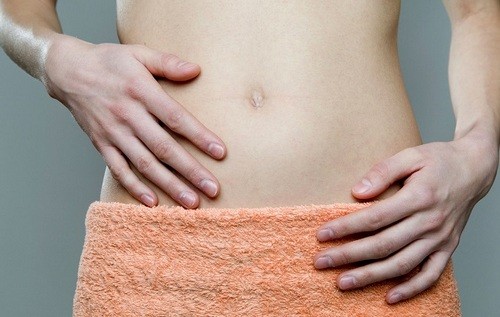Regurgitation occurs as a result of involuntary throwing of small portions of the contents of the stomach, first into the esophagus and then into the pharynx and oral cavity. Often it is also accompanied by the discharge of air.
Mostly, this condition is observed in infants immediately or shortly after feeding. Infant may burp partly curdled or not curdled milk.
This can occur about five times a day, in small volumes (no more than three tablespoons).
With a normal discharge of food from the stomach of a newborn :
- Do not cry after regurgitation.
- Does not reveal irritability and lethargy, but behaves as usual.
- Constantly gaining weight.
If the newborn spit up too often, intensively (like a fountain), large volumes (more than three tablespoons), this happens immediately after each feeding, gives the baby discomfort and leads to weight loss, you should consult a doctor as soon as possible.
Causes of regurgitation
- Total immaturity of the body. Usually this is observed in babies who were born before the prescribed period, or in babies with intrauterine growth retardation. In this case, regurgitation in children may have different intensity, but as the body matures, they decrease or disappear altogether.
- Overfeeding This can occur when the baby is sucking too much, especially if the mother has a lot of milk. When feeding with artificial mixtures, with the introduction of them into the diet of the child or with their frequent change. When overfeeding, the baby usually spits up after feeding, less often during it, while he is gaining weight well, has a normal stool and behaves as always.
- Flatulence, constipation or intestinal colic. All these phenomena lead to an increase in pressure in the abdominal cavity and, as a consequence, to poor food progression through the digestive tract. Such regurgitation may have different intensities.
- Swallowing air. A baby during sucking can swallow air. Most often, this happens with greedily sucking babies, with an insufficient amount of breast milk in a woman, with improper attachment to the breast, with a large hole in the nipple of the bottle. In this case, newborns may be anxious after feeding, and regurgitation often occurs five or ten minutes after it, not altered milk with a distinct sound of outgoing air.
- Gastrointestinal defects. This usually provokes frequent, abundant regurgitation and even vomiting.
- Peritoneal damage to the central nervous system, often caused by hypoxia. This disrupts the nervous regulation of the esophagus. Along with regurgitation, the crumbs usually also have neurological symptoms: impaired muscle tone, pen tremor, increased anxiety.
- Infectious diseases. Burping in infants resulting from infectious processes often occurs with an admixture of bile and is accompanied by a deterioration in the general condition of the baby: monotonous weeping, lethargy, discoloration of the skin, etc.
In addition to the regurgitation can lead to tight swaddling, braking the baby immediately after feeding, a sharp change in the position of the body of the crumbs and inadequate choice of the mixture.
In most cases, regurgitation in newborns is a completely normal process, which eventually goes away on its own. Therefore, if the crumb gains weight and develops well, this phenomenon should not cause much concern to parents. However, sometimes regurgitation can be one of the signs of a pathology that requires timely detection and treatment. Therefore, it is very important to know which regurgitations are considered the norm, and which ones can talk about health problems.
How to help the child
First of all, in order to reduce the frequency and intensity of regurgitation, care should be taken to exclude all provoking factors: air ingestion, overfeeding, fast sucking, etc.

To do this, follow these rules:
- Properly attach the baby to the chest. Make sure that he captures both the nipple and the areola, this will reduce the likelihood of swallowing air.
- If the baby eats from the bottle, take care that the nipple opening is of medium size and that there is no air in it when feeding.
- When feeding, place the baby so that the upper part of its body is raised by about 50-60 degrees relative to the horizontal plane.
- After feeding, be sure to place the baby in an upright position and hold it for about twenty minutes, this will allow the accidentally swallowed air to escape unhindered.
- Do not swaddle the child too tightly, especially in the abdomen, it should not squeeze anything. For the same reason, it is worth discarding the sliders with elastic, instead of them it is better to use overalls or panties that are fastened on the shoulders.
- Try to feed the baby in smaller portions, but more often. At the same time make sure that the daily amount of food eaten by the child does not decrease.
- To lower the contents of the stomach in the esophagus, put the baby to sleep on his right side or stomach. With the same purpose under the head of the baby is recommended to put a folded diaper.
- To prevent frequent regurgitation, lay out the crumbs more before feeding on the tummy. Also massage him with a palm around the navel in a clockwise direction.
- After feeding do not bother and do not disguise the baby.
If compliance with the above rules did not bring positive results, the child may require dietary correction, consisting in the introduction into the diet of anti-reflux and casein mixtures, or medication, affecting intestinal motility.
Both are appointed by the pediatrician, taking into account the characteristics of each child.



